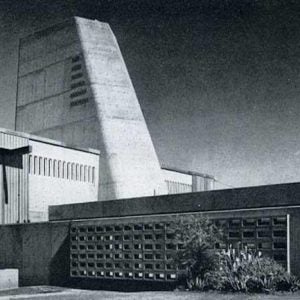In an unprecedented move, on 11 December the Canadian government passed emergency legislation to order the restart of AECL’s NRU reactor at the Chalk River Laboratories, bypassing the national regulatory authority, the Canadian Nuclear Safety Commission (CNSC). The legislation received all-party support in the House of Commons (currently the Conservatives do not command an absolute majority). Prime minister Stephen Harper said that the decision to order a restart was based on the urgent need to resume medical isotope production, and supported by advice from independent experts who had assured him that the reactor could be operated safely.
CNSC president Linda Keen said that this action was, in effect, allowing the Crown Corporation to regulate itself.
The NRU reactor, which produces more than half of the world’s supply of medical isotopes, was shut down for planned maintenance work on 8 November. On 15 November, AECL reported to CNSC staff that one of a number of safety upgrades, required by the CNSC, had not been completed and the reactor had been operating in violation of its licence. At the time of going to press, the safety upgrade – connection of seismically qualified emergency power supplies to two of the reactor’s eight main coolant pumps – had been half-completed, in that one pump had been connected to a seismically qualified emergency power supply. The reactor restart was announced on 13 December by AECL, and supplies of isotopes (used principally for diagnostic purposes) were expected to resume about a week later.
The cause for the oversight is still under investigation by AECL. A former AECL employee told NEI that there appeared to be a long history of poor communication between AECL and CNSC staff and that the relationship could be described as “dysfunctional”.
Upgrades and timeline
The NRU reactor came into service at Chalk River in 1957. It was designed for plutonium and other isotope production, nuclear research and engineering development. The reactor is currently rated at 130MWt and is heavy water cooled and moderated. In 1996, AECL’s business and operational planning assumed that operation of the NRU reactor would not continue beyond 2005. However, in February 2003, in a letter to the CNSC, AECL head Robert Van Adel said that AECL wished to continue operating NRU beyond 2005, noting that there was no available replacement for NRU. Safety analysis of NRU, Van Adel noted, showed that with seven major safety upgrades, there were no technical reasons why the reactor could not be operated beyond 2005. In November 2005 the CNSC approved a seven-month licence extension for NRU to permit operations while analyses and regulatory reviews were completed to support extension of NRU operations until 2012.
|
“” |
|
There appeared to be a long history of poor communication between AECL and CNSC staff |
In August 2006 the NRU licence was renewed after AECL provided written confirmation that all required safety system upgrades had been completed by 31 December 2005. These upgrades included the requirement that two pumps (P-104 and P-105) of the eight main circulating pumps be provided with seismically qualified emergency power supplies. The rationale for this was that the NRU design, with heat exchangers at a lower level than the reactor vessel, does not permit natural cooling by thermosyphoning in the absence of forced flow. Reliable operation of some pumping capacity, therefore, is a matter of some importance.
As noted above, in the course of a planned outage in November, it was discovered that neither P-104 nor P-105 were connected to the emergency power supply. AECL voluntarily extended its outage in order to connect the two pumps. During a commission tribunal meeting on 6 December, Brian McGee, AECL’s senior vice president and chief nuclear officer, told the commission that while connection of the emergency power system to pump P-105 was essentially complete, connection of P-104 was dependent upon delivery of components. He suggested there was “a 75% probability of a return to service of the reactor by the end of December and a 95% probability of return to service by the end of January.”
The isotope crisis
Most of the medical isotopes produced by NRU are for diagnostic purposes, and have relatively short half lives. This means their shelf life is quite limited, and any break in production has quite immediate effects on supply. By 4 December the CBC was reporting that 150 medical tests had been cancelled in Nova Scotia and that doctors were predicting a similar number of cancellations for the following week. As well, the national broadcaster reported a sense of frustration among the nuclear medicine community that there existed no contingency plan to ensure continuity of supply.
AECL’s planned two MAPLE reactors, designed for medical isotope production were scheduled to come into service at Chalk River around the turn of the century, but have not yet started isotope production.
Meanwhile, on 14 December, the resignation of AECL chairman Michael Burns was announced. Burns, who was appointed chairman by the Conservative government in October 2006, will be replaced by Glenna Carr, a former Ontario top civil servant. At the same time it was announced that Hugh MacDiarmid, a former rail executive, would become AECL president and CEO, replacing Robert Van Adel, who retired 1 November.
Related ArticlesGetting the gloves on A critical end £7.4 million ventilation overhaul Shred it up and start again UKAEA plans to sell off decommissioning arm UKAEA Ltd






